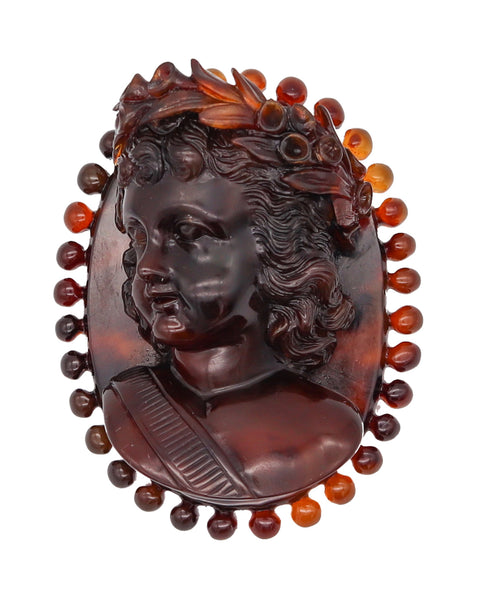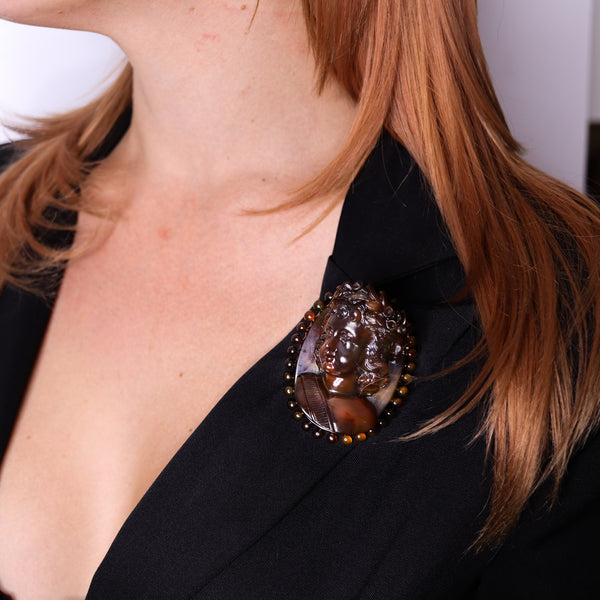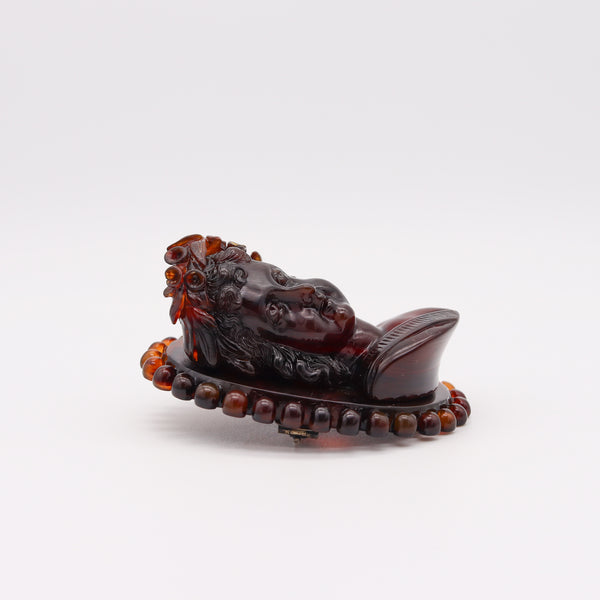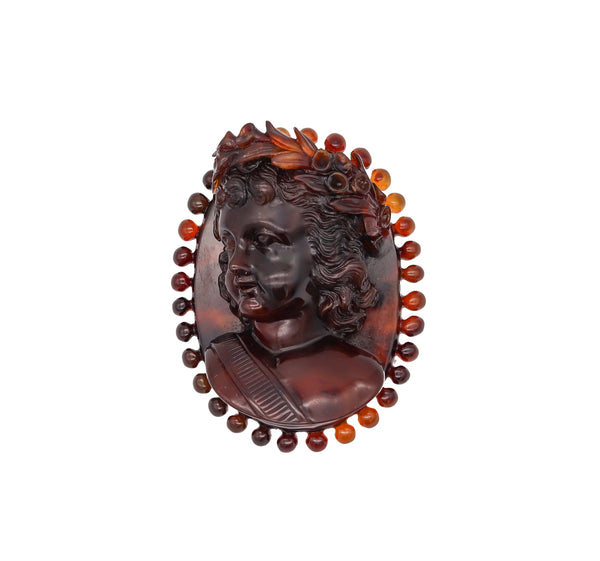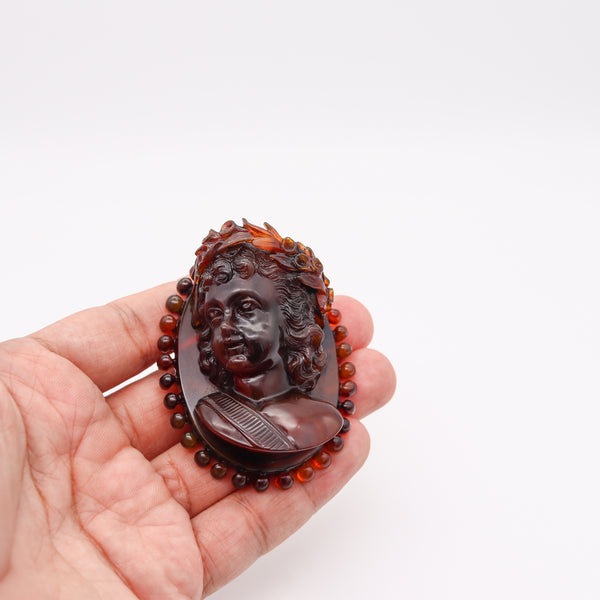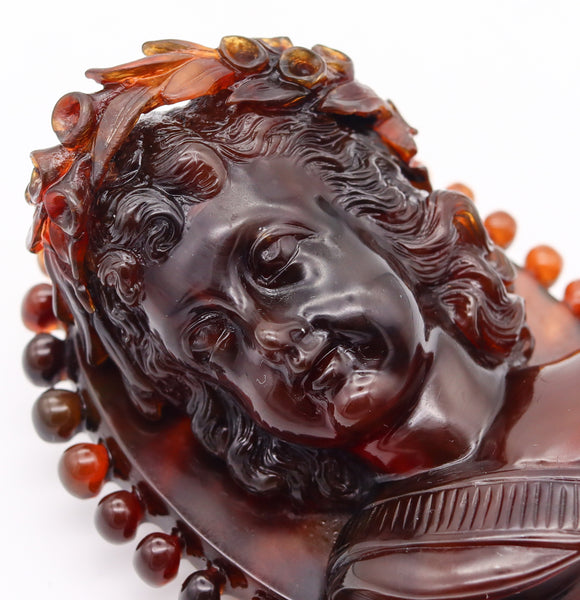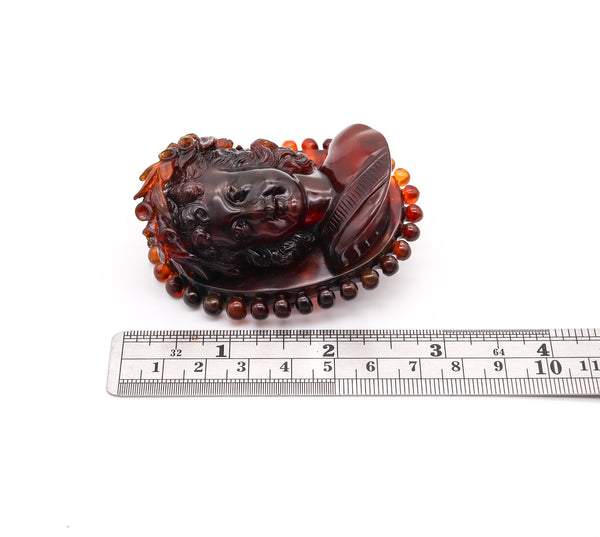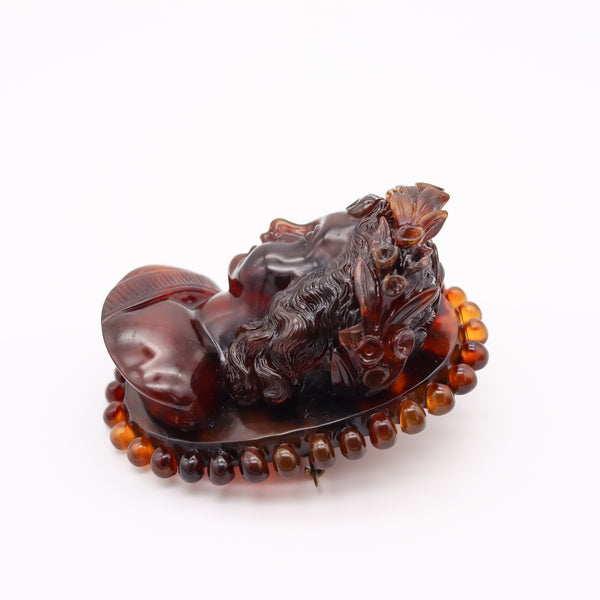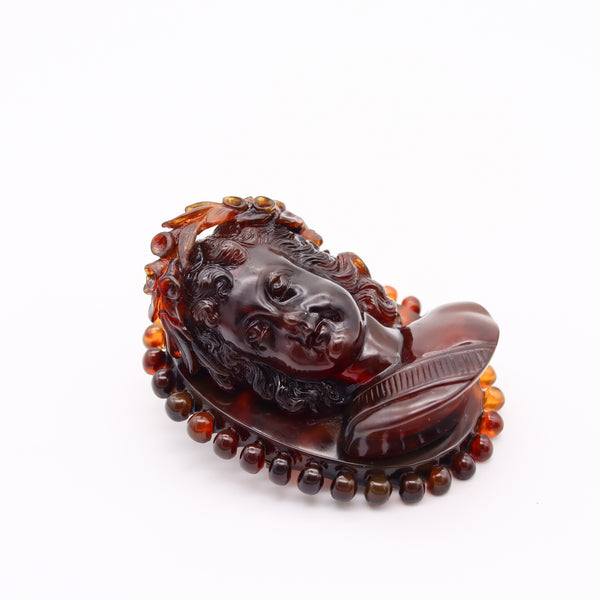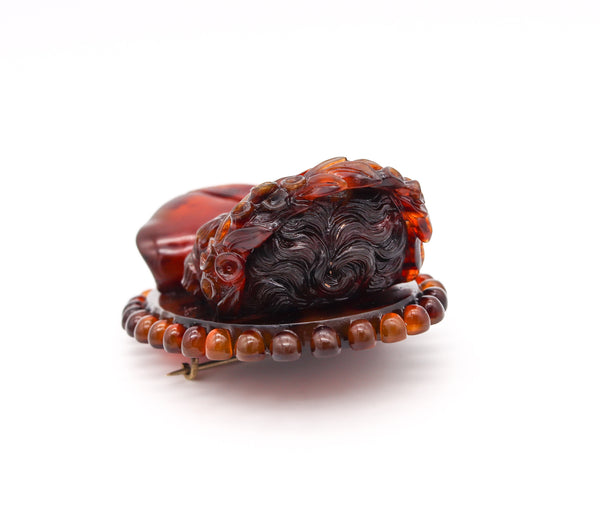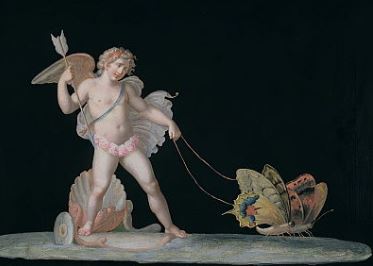Victorian 1850 Antique Sculptural Brooch With Carved Portrait Of Cupid In High Relief
Carved cupid brooch from the Victorian period.
Exceedingly rare three-dimensional piece, created in England during the early Victorian period (1837-1901), circa 1850. This gorgeous sculptural brooch, depicts the carved profile in high relief of the mythological portrait of cupid, slightly facing three quarters to the right. It is adorned with a ribbon going from the right shoulder to the middle of the chest (arrow basket holder) and crowned with a detailed wreath of laurels and flowers. The main carving is attached from the back to a flat oval dentilated piece with two invisible pins and fitted with a horizontal hinged pin bar with a security hook lock to wear as a broch.
The carving is exceptional, with great attention to detail, especially in the texture of the hair, the wreaths and the plump expression of the cupid's face. Truly a remarkable work!.
.jpg)
Cupid, is the god of desire, erotic love, attraction and affection in classical mythology, means the passionate desire. He is often portrayed as the son of the love goddess Venus and the god of war Mars. He is also known in Latin as Amor. His Greek counterpart is Eros. Although Eros is generally portrayed as a slender winged youth in Classical Greek art, during the Hellenistic period, he was increasingly portrayed as a chubby boy. During this time, his iconography acquired the bow and arrow that represent his source of power: a person, or even a deity, who is shot by Cupid's arrow is filled with uncontrollable desire. In myths, Cupid is a minor character who serves mostly to set the plot in motion.
Weight: 51.45 Grams, (32.98 Dwt).
Measurements: 70 mm by 54 mm by 32 mm (2.76 x 2.13 x 1.26 Inches).
Hallmarks: None
The Victorian, era is one of the most influenced and influential periods of antique jewelry. This period is defined by the British monarch, in this case, Alexandrina Victoria, the Queen of the United Kingdom of Great Britain and Ireland, as well as the Empress of India, years 1837-1901. There are 3 sub-periods within this era. First, the early, Romantic period, which is soaked in traditions, natural motifs in gold and silver, clear stones only being worn during the day and colored gems by night.
The second being the Grand or mourning period, which coincides with the death of Queen Victoria's husband, Prince Albert the consort, who died in December of 1861. This period included large, dark, somber, dramatic jewelry, with a lot of black onyx, jet wood, amethyst, garnet and gold. This lasted until 1880's, when the aesthetic period of jewelry began.
The Late or third stage of the Victorian period, use more complex and feminine motifs, returning to the natural, including many floral and celestial designs, with more decadent gemstones, lasting until the turn of the century. The Victorian era of jewelry includes many movements found in other countries, including revivals such as the Etruscan the Roman and the Egyptian as well as the Art Nouveau, Liberty style and Arts and Crafts design movements which lead into the beginning of the twentieth century.
Collateral: This piece is accompanied by a presentation jewelry box.
Condition: The overall condition of this brooch is excellent. Beside the little normal wear, there is no damage to the carving and is secured in the settings. This piece has been carefully inspected to guarantee the condition and authenticity.
INVENTORY REF: P100422MAEN/.1122












